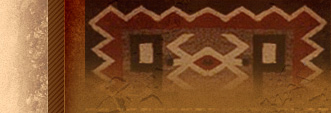 |
 |
| |
Worldview
|
|
| |
Tapestry operates out of Indigenous Earth-based worldview. What do we mean when we talk about “worldview”?
It’s such a familiar word to us that we don’t even pause to ask whether its true meaning might be eluding us. We say it’s the way we look at things -- our politics, our religious beliefs, our perspectives on life and reality. And so it is.
But is a far more subtle and complex thing as well.
Worldview is something we drink in with our mother’s milk when we are an infant, knitting it into our thought patterns like her milk is knitted into our bones. We breathe it in with the comforting scents of home. Worldview coalesces into a lens of “the normal” that encompasses everything from the appearance of our neighborhood and the dress and skin color of the people around us, to the way we acquire and cook food, and the way we understand everything that we see, touch, and hear around us. Even the spoken language we learn from our earliest days contains a patterning of reality and a maze of assumptions about the world it describes.
Worldview might be imagined as a giant lens-bubble that encases us entirely but invisibly, translating events and experiences into forms that fit our patterned expectations.
A number of 20th century philosophers, calling themselves Phenomenologists, examined this whole question of the unconscious frameworks that determine how human beings interact with other individuals and cultures. Central to their work is the discovery that a human being is incapable of stepping outside his or her worldview—indeed, incapable of even perceiving its presence—without rigorous training and experience.
“Truth” is a core concept in this life-long patterning, and a potentially explosive barrier between individuals and cultures. In a very simple example, “A is not non-A” is true in an ultimate sense for most Westerners: that is, if one thing is true, its opposite cannot also be true. But this is by no means true in many other cultures. In fact, as multiculturalism becomes commonplace, such clashing assumptions meet daily at urban street corners.
What does this multiplicity of worldviews mean for us?
First, we need to understand that what we hold as true might not be True in an ultimate sense. At least we can be certain that our truth is not going to be accepted as true by everyone around us.
Second, if we live as if our truths are the only ones that matter, we are going to alienate and anger those whose worldviews we unwittingly trample.
Most importantly, we need to curb our tendency to judge and rank the ways of people different from ourselves. We need to proceed gently at the places where our worlds intersect with others. Our lifelong cultural lenses blind us to their realities, just as theirs do to ours.
In other words, walk softly and carry plenty of lens cleaner.
Learn about Indigenous Earth-based worldview.
|
|
|
|
|
|
 |
|
|

